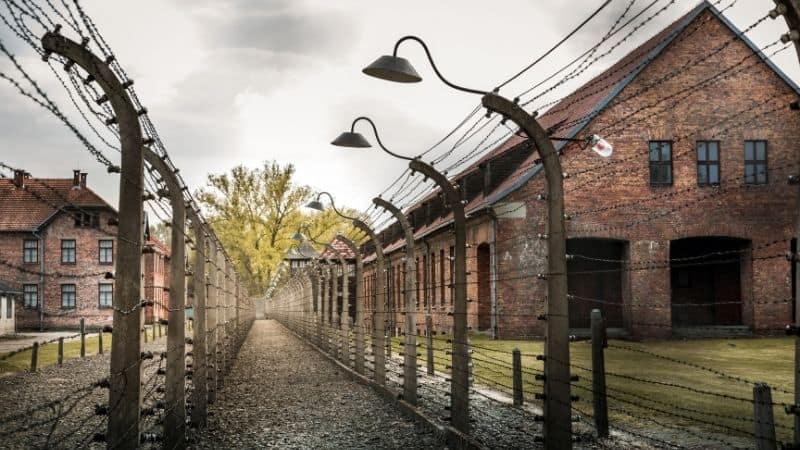Visiting Auschwitz-Birkenau Concentration Camp
There is probably no other museum dedicated to the history of World War II, that would be as significant, meaningful or drastic as the Auschwitz-Birkenau death camp. If there’s one museum that can help you truely understand this nefarious and ruthless period in history, it’s definitely this former concentration camp. Many believe, that every person in the world should visit it at least once. If you’re interested in visiting this museum, this article will provide you with some crucial information you should know before planning your trip.
Opening hours
The Auschwitz-Birkenau Death Camp museum is opened at any day of the year, with the exception of January 1st (New Year’s Day), December 25th (Christmas Day) and the Easter Sunday.
The museum opens at 8:00 a.m. and depending on the month, it closes at 2:00 p.m. (December)
3:00 p.m. (January and November), 4:00 p.m. (February), 5:00 p.m. (March and October). 6:00 p.m. (April, May and September) or 7:00 p.m. (June to August).
Keep in mind, that these hours refer to the time of entrance to the museum and visitors can stay until 1,5 hours after the final hour of the beginnig of sightseeing.
Options of sightseeing inside the camp

Tourists arriving in groups are obliged to engage an educator guide. This will allow them to efficiently explore the entire area of the former camp and get familiar with its history and objects. Only licenced educator guides are allowed to show tourists around the camp.
General group sightseeing (approx. 2,5 hours) – visting chosen elements of the permanent exhibit and objects in the main camp known as Auschwitz I, including prisoner barracks and the unloading ramp. Bookings of this type of tour are accepted only if the opening hours of the Museum do not allow for a standard 3.5 hour tour.
General group sightseeing in turns (approx. 3,5 hours) – visiting the permanent exhibit and the objects in the main camp; visiting the most crucial post-camp objects in the Auschwitz II Birkenau camp – prisoner barracks, unloading ramp, ruins of gas chambers and ruins of crematory II or III.
Sightseeing without a guide – this option is available at certain hours based on free admission cards, which can be acquired in the sightseeing booking system.
The museum also organizes one and two-day tours for students, dedicated to school youth. The purpose of these tours is to help students learn more about World War II, the Auschwitz death camp and the Holocaust. If a teacher would like to organize a tour to Auschwitz for their students, they should first provide students with general information about the camp itself and prepare them emotionally for what they’re going to see, This kind of preparation is especially crucial for younger students under the age of 13.
The Auschwitz Museum is divided into several sections, including:

The main exhibit – this exhibit was created at the area of the former Auschwitz I death camp in 1947. The first project of the main exhibit was mostly created by former prisoners. It was decided, that the exhibit will document the history of Auschwitz and will be placed in the main camp. The original version of the permaneny exhibit was opened on June 14th 1947. Its most important part, entitled „The Death of Millions” was placed in bloock number 4. Its basements were also adapted for exhibitional purposes.
National exhibits – the museum can also offer other exhibits, described as „national”. These are exhibits created by various countries. The first national exhibit was created in 1960 by Czechoslovakia. It was followed by exhibits by such countries, as Bulgaria, Austria, France, Poland, Belgium and others.
While visiting the museum, tourists must behave with all due seriousness and repect. Visitors are obliged to wear clothing that is appropriate to the character of the place.
Visitors of the former Auschwitz death camp are forbidden to:
- ride any vehicles at the area of the camp
- enter the camp with any pets (except for assistance and guide dogs after showing the training certificate and the current vaccination booklet)
- show public behavior, that would violate the honor of the victims of Auschwitz, deny the Nazi crimes or popularize hateful messages
- eat or drink any food
Some of the block in the museum are available for people on wheelchairs.
Tours to Auschwitz
The most comfortable way to visit Auschwitz is to joining organized tours to the camp. By joing organized trip you don’t have to worry about transportation and entrance tickets for guided sightseeing inside the camp. The best way to book this type of tour is directly with local tour operator.
Our comapny organize tour to Auschwitz from many cities in Poland and also from other countries in Europe.
Depends on which city are you staying in Poland we can organize tours from:
Important
Due to frequent problems with availability of entrance tickets and guides in Auschwitz, we advise you to book your tour as early as possible before your planned visit so we can make all necessary arrangements for you.